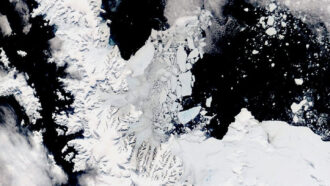Where will lightning strike?
Dangerous and dazzling, thunderbolts give scientists a peek into storms
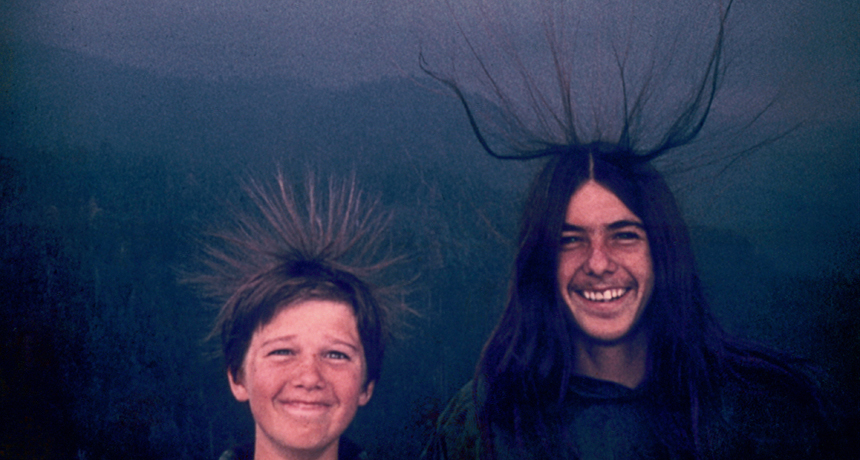
Sean McQuilken (left) and his brother Michael (right) were hiking in California when their hair stood on end. Lightning struck minutes later, injuring Sean and killing another hiker.
Michael McQuilken
Michael McQuilken will never forget the day lightning struck his younger brother.
On August 20, 1975, he and Sean hiked to the top of Moro Rock together with their sister Mary and her friend Margie. This granite dome resides in California’s Sequoia National Park. As dark clouds gathered overhead, a light rain started to fall. Another hiker noticed Mary’s long hair standing on end.
Michael snapped his sister’s picture. Laughing, Mary told him that his hair, too, was standing on end. So was Sean’s. Michael passed the camera to Mary, who took a photo of her smiling brothers. Then the temperature fell, bringing hail, Michael recalls. So their team headed down. They didn’t realize they were in danger. Immediate danger.
Within minutes, lightning would injure Sean — and kill another hiker nearby.
Being struck by lightning is very unlikely but very dangerous. Lightning heats the air to nearly 28,000° Celsius (50,000° Fahrenheit). That’s energetic enough to break the molecules in the air into individual atoms.
No wonder lightning can be fatal.
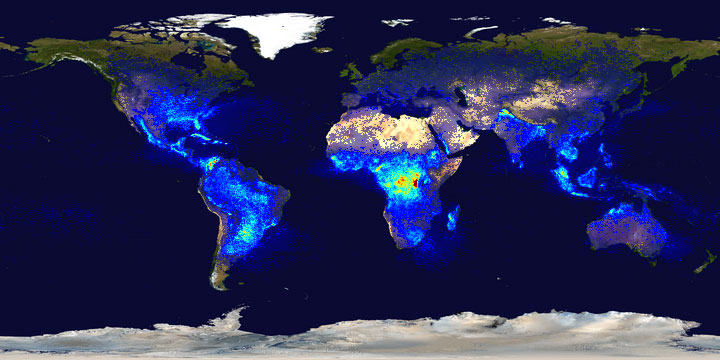
Although dangerous, lightning also is one of nature’s most dazzling displays. For centuries, scientists have been trying to understand what triggers lightning. More importantly, they want to know where — or who — lightning is likely to hit. Researchers have looked for common threads in the stories of lightning’s victims. They’ve tracked flashes using sensors on the ground and in space, including one on the International Space Station. And they have created lightning in the laboratory.
However, scientists are still struggling to understand exactly how a spark starts and how to predict where it might connect with the ground. Some researchers even suspect lightning could be used as a tool to better understand the global climate — if they only knew how to wield it.
Warming up
Thousands of years ago, people associated lightning’s sparks with angry gods. In ancient Norse mythology, the hammer-wielding god Thor hurled lightning bolts at his enemies. In the myths of ancient Greece, Zeus threw lightning from atop Mount Olympus. The early Hindus believed the god Indra controlled lightning.
But over time, people began associating lightning less with supernatural forces and more with nature.
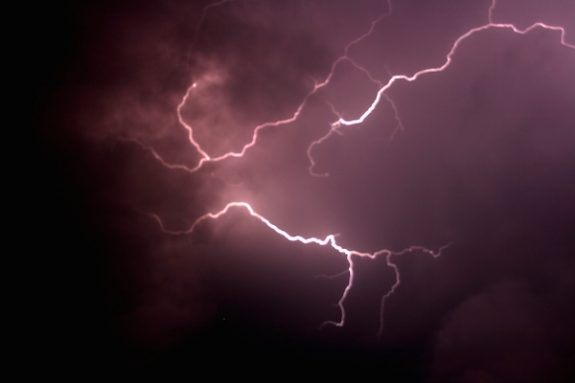
“Thunderstorms are like huge vacuum cleaners that suck up water vapor,” says Colin Price. He’s an atmospheric scientist at Tel Aviv University in Israel. “Some gets vented out the top of storms,” he says of the water vapor. But most of it in the upper atmosphere comes from Earth’s surface.
Scientists suspect that turbulence within a cloud — strong vertical winds — causes the cloud’s water droplets, snow, hail and ice particles to smash into each other. These collisions can pry particles called electrons from the water drops and ice as they rise to the top of the cloud. Electrons are responsible for electricity. When an uncharged object loses an electron, it is left with an overall positive charge. And when it gains an electron, it gains a negative charge.
Water droplets, ice and hail come in a range of sizes. Large ones sink to the bottom of the cloud. Small ice crystals rise to the top. Those tiny ice crystals at the top tend to become positively charged. At the same time, the large hail and water droplets at the cloud’s bottom tend to become negatively charged. As such, Price likens a storm cloud to a battery standing on end.
Those charges in the clouds can cause changes on the ground. When the lower part of the cloud becomes negatively charged, objects in the air and on the ground below become positively charged.
On that day back in 1975, positive charges climbed through the hikers’ hair, standing it on end. (To safely see something similar to this firsthand, rub your head with a balloon to transfer electrons from your hair to the balloon. Then lift the balloon.) The hikers’ hair-raising experience might have looked funny — but it also was a warning sign that conditions were right for a lightning strike.
Ka-boom!
As they were coming down from Moro Rock, the hikers saw lightning’s fury up close. Too close.
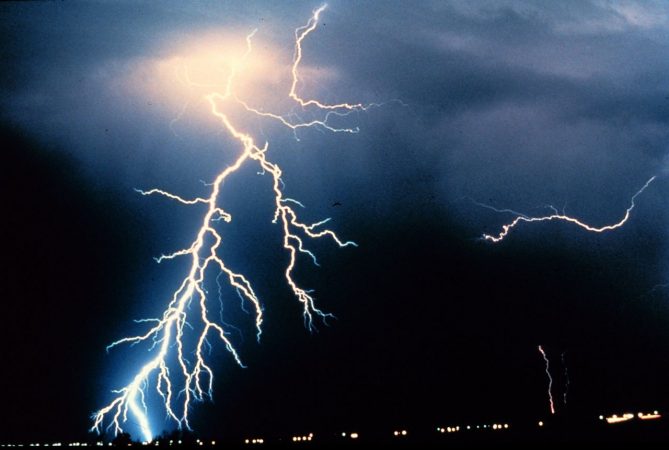
“My entire vision was nothing but bright white light,” McQuilken says of the strike. “Margie, who was about 10 feet behind me, says she saw tentacles or ribbons of lighting.” The bolt knocked McQuilken to the ground. Time, he recalls, appeared to slow down. “The entire experience occurred in a matter of milliseconds, but that feeling of floating and moving my feet in the air seemed to last five or ten seconds.”
The lightning missed Michael, Mary and Margie, but not 12-year-old Sean. McQuilken found his brother on his knees with smoke “pouring from his back.” Sean’s clothes and skin were badly burned. But he was alive and would survive. McQuilken carried his brother down from the granite dome to get him help. Another hiker nearby was not so lucky. Lightning killed him.
Air between the ground and a cloud usually separates their charges. The air acts like an insulator, which means electricity — such as lightning’s giant spark — can’t travel through it. But when enough charge accumulates in the cloud, it finds a way to get to the ground, and lightning strikes. This electrical discharge zips from one place to another to even out the imbalance in charge between the ground and the top of the cloud. The discharge may move from cloud to cloud, or it may zap the ground.
That’s no mystery.
But what causes lightning to start its spark is “one of the great unanswered questions in lightning physics,” explains Phillip Bitzer. He’s an atmospheric scientist who studies lightning at the University of Alabama in Huntsville.
Looking for the spark
Scientists think lightning sparks in one of two ways. According to one idea, the charged hail, rain and ice inside a storm cloud magnifies the electric field within the cloud. (An electric field is the region where the charges can do work.) That added boost gives the charges enough oomph to spark lightning. The other idea is that lightning is sparked when cosmic rays, powerful bursts of energy from space, deliver particles with enough energy to launch a strike.
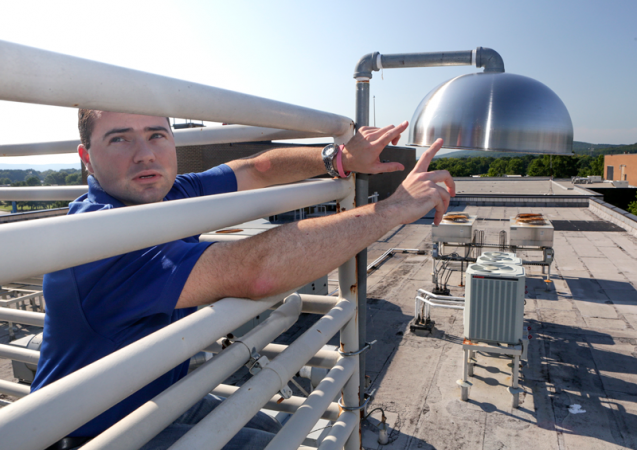
To better understand how lightning starts, Bitzer helped design a new sensor. It looks like a large, upside-down salad bowl. And it’s one of several scattered in and around Huntsville (including atop a university building).
Together, these sensors make up the Huntsville Alabama Marx Meter Array, or HAMMA. When a storm passes by and a bolt of lightning flashes, HAMMA can determine where the strike happened. It also measures the electric field produced by the strike. Its sensors can peer inside a cloud during that critical split-second before lightning develops. Bitzer described HAMMA’s first successful tests in Journal of Geophysical Research: Atmospheres on April 25, 2013.
HAMMA also measures lightning’s return stroke. This is the second — and more energetic — part of a strike.
Lightning begins with a leader. This stream of negative charge leaves the cloud and searches for a path through the air to the ground. (In rare cases, leaders start on the ground and move upward.) Though every strike is different, a leader may travel about 89,000 meters (290,000 feet) per second. It often looks branched. It tends to produce dim light that can only be caught by high-speed cameras.
The leader’s path can conduct electricity through the cloud. The return stroke, which comes from the ground, follows the path laid out by the leader like electricity on a wire. It moves in the opposite direction. And it’s more intense: The return produces the blinding flash that can be seen day or night. That’s the part you’re most likely to notice. Compared to the leader, the return stroke is a speed demon. It can travel 90 million meters (295 million feet) per second — or more. By tracking this return stroke, HAMMA can help scientists better track the total energy unleashed during a strike. Such energy data, from HAMMA and other networks, could help scientists determine how lightning strikes start.
|
Watch lightning travel from a cloud to the ground in slow-motion. Phillip Bitzer |
Besides his work on HAMMA, Bitzer helps make devices that detect lightning from space. When the GOES-R weather satellite heads into orbit in 2015, it will carry the Geostationary Lightning Mapper. That device, partly developed at the University of Alabama in Huntsville, will track lightning flashes from above. It’s not the first device to watch lightning from space, but it will improve on previous efforts.
“At the present time, we don’t have good global coverage of lightning,” says Price, at Tel Aviv University. “However, in the next few years, satellites with optical sensors will look at Earth continuously.” That will let scientists connect lightning strikes to other weather phenomena, such as hurricanes and tornadoes. These data also may show whether climate change has been altering lightning patterns.
The pulse of the storm
Price says lightning strikes are like the pulse of a storm. By tracking how often lightning sparks, scientists can learn something about a storm’s behavior.
Price worked on a study of hurricanes published in 2009. It found a connection between lightning strikes and the intensity of those storms. Price and his colleagues studied data from 58 hurricanes and compared them to records of lightning strikes. The intensity of lightning peaked about 30 hours before the hurricane winds reached their maximum.
That connection could help scientists predict when the worst part of a hurricane is coming — and warn people to prepare or evacuate before it’s too late.
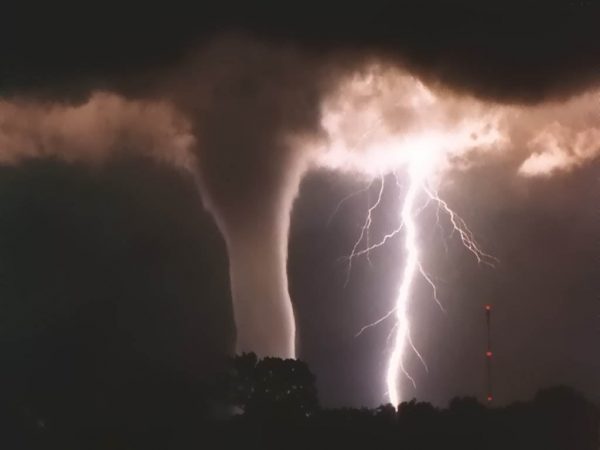
It even appears that lightning can change its behavior, Price finds.
He has been studying connections between lightning and climate change. In a 2013 paper, he showed how rising temperatures due to global warming can boost lightning activity. He published his findings in the journal Surveys in Geophysics.
How not to get struck
Of the people killed by lightning in the United States between 2006 and 2012, most were enjoying outdoor activities. That’s the finding of a 2013 study by the National Weather Service (NWS).
“Being outside is dangerous any time there’s a thunderstorm in the area,” says John Jensenius. The NWS meteorologist in Silver Spring, Md., tracks lightning deaths and studies lightning safety. He also worked on the 2013 study.
People fishing in small boats — mostly on lakes and streams — or standing near the shore accounted for most of those deaths. In second place: people participating in outdoor sports. Here, soccer led the pack in terms of lightning fatalities. And though golfers have a reputation for being particularly susceptible to lightning, golf, Jensensius says, is “down the list quite a ways.” (Lightning killed seven times as many anglers as golfers.)
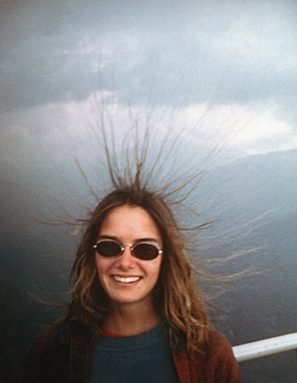
“It’s probably a combination of things,” he says. “Men may be outside doing more vulnerable activities than women. Or men may be more reluctant to go inside if they hear thunder.”
Lightning even can send jolts through electrical or water lines into a house, injuring the people inside. That’s why, Jensensius says, it’s a bad idea to bathe, wash dishes or use appliances during a storm.
Thunder is the key to safety, he points out. Most lightning strikes occur within a thunderstorm, but a small percentage can reach miles from the storm center. So going inside only when it starts to rain won’t keep a person safe. Indeed, Jensenius warns, if you can hear thunder, you are probably within reach of a lightning strike. Certainly, he advises: “When thunder roars, go indoors.”
Michael McQuilken has taken that advice to heart. He’s still an avid hiker and mountaineer (as well as a professional drummer). If a storm is brewing and “I see clouds beginning to form around a summit, I call it a day,” he says. “Some people think I’m being overcautious. But I don’t want to experience a lightning strike ever again.”
* Editor’s Note: This story contains a correction of Sean’s age at the time of the lightning strike.







